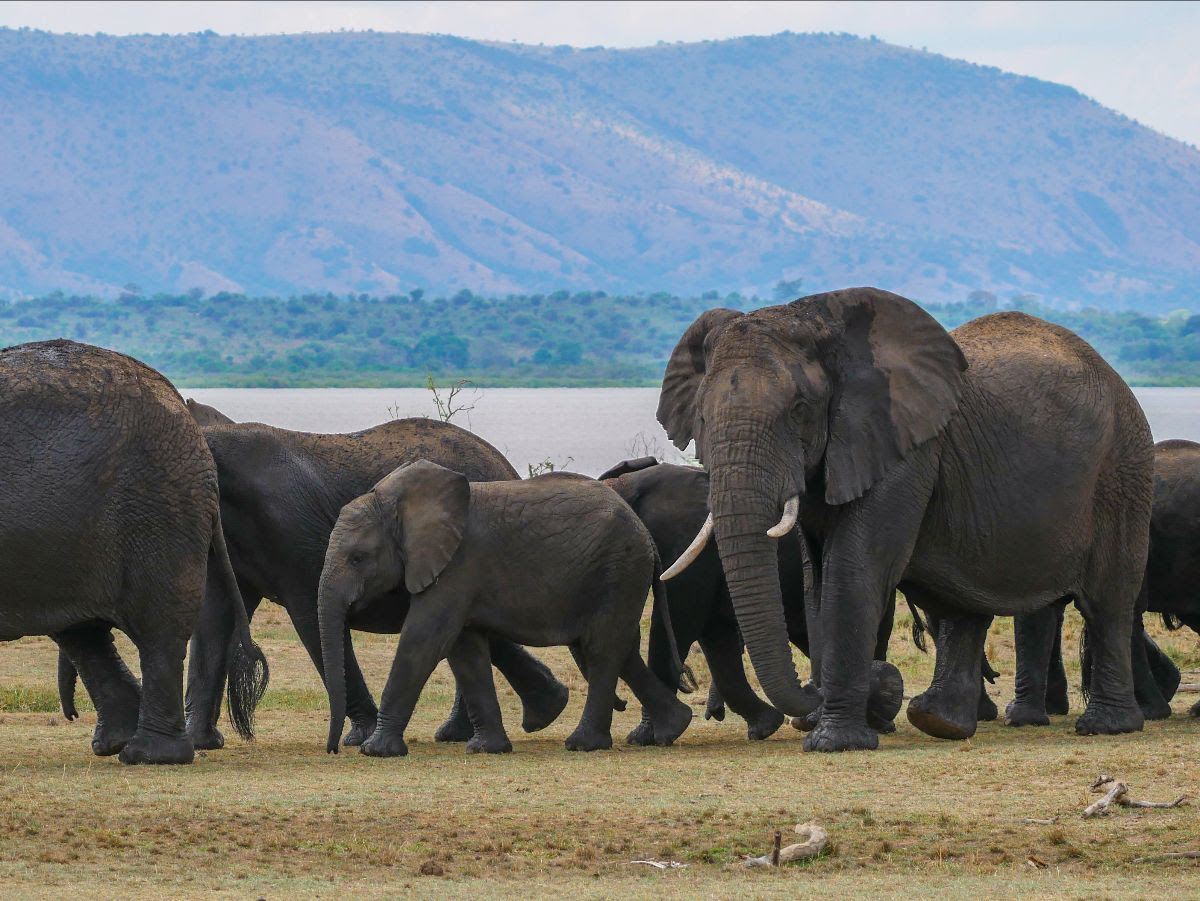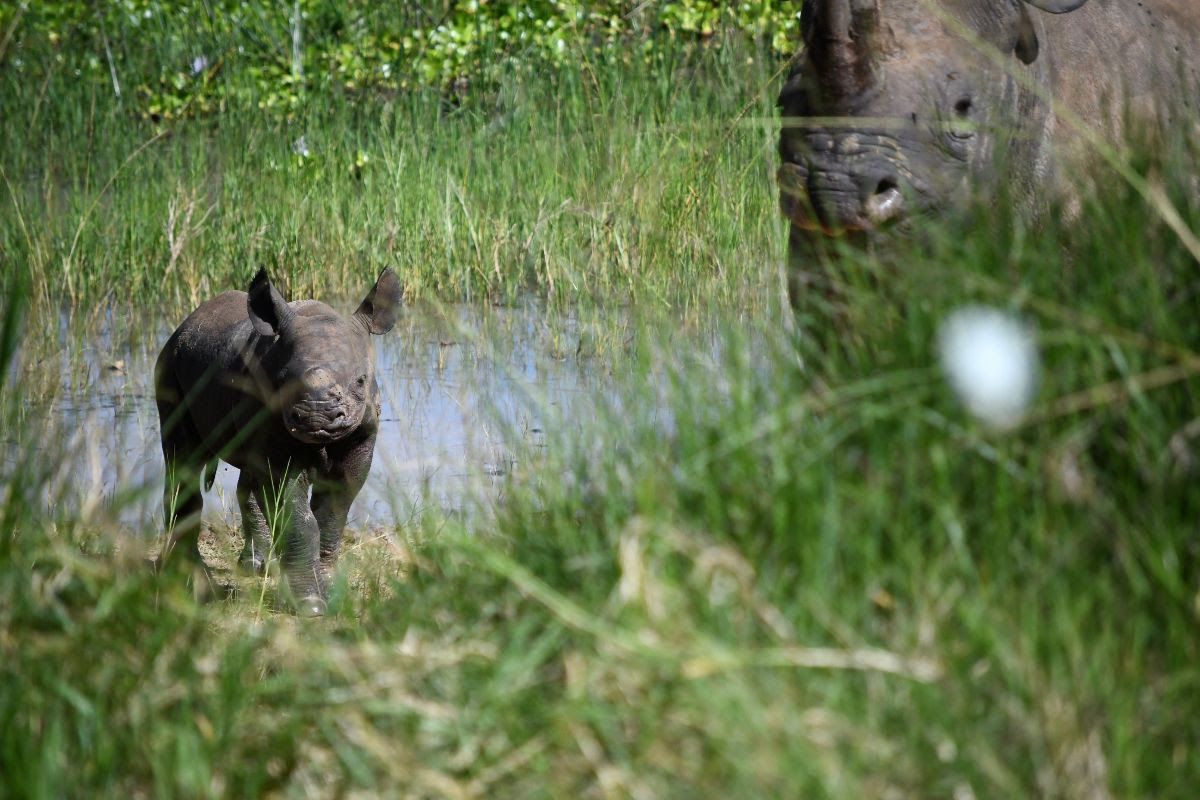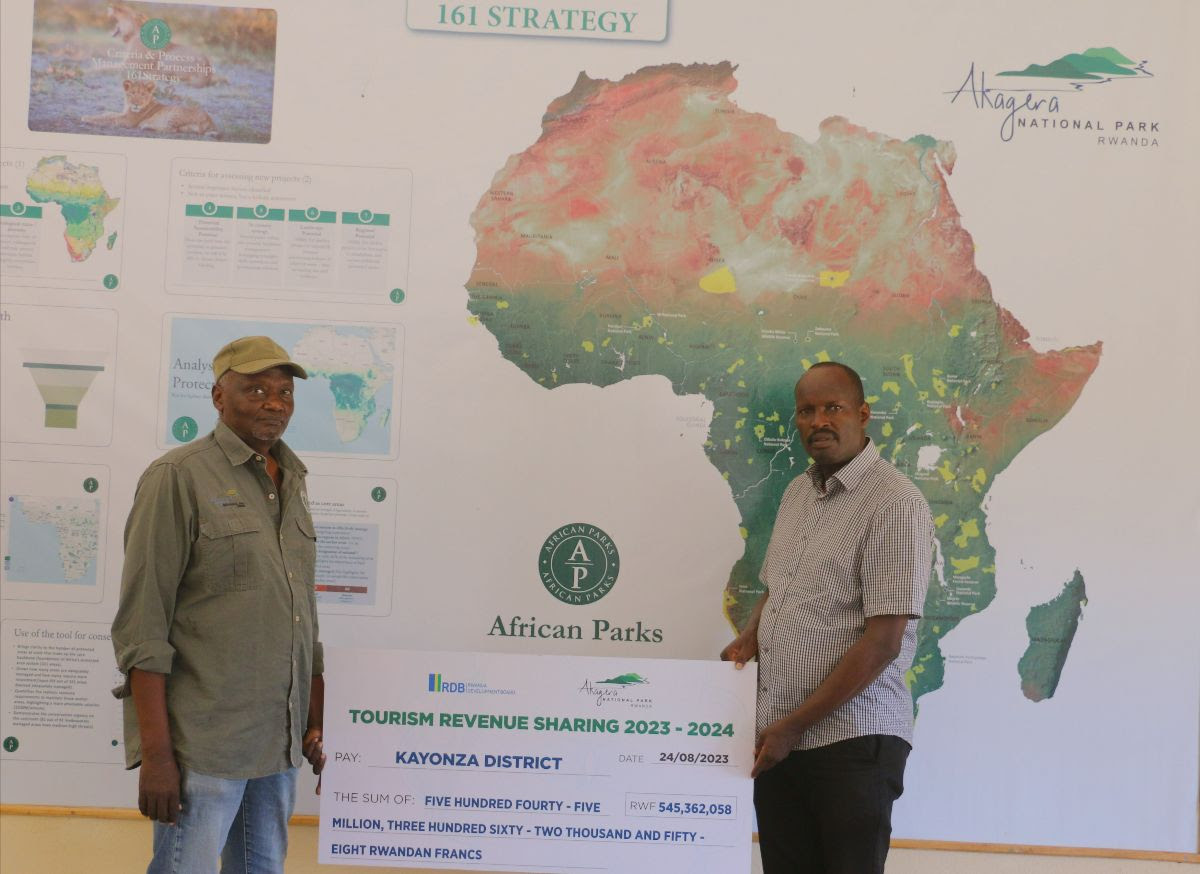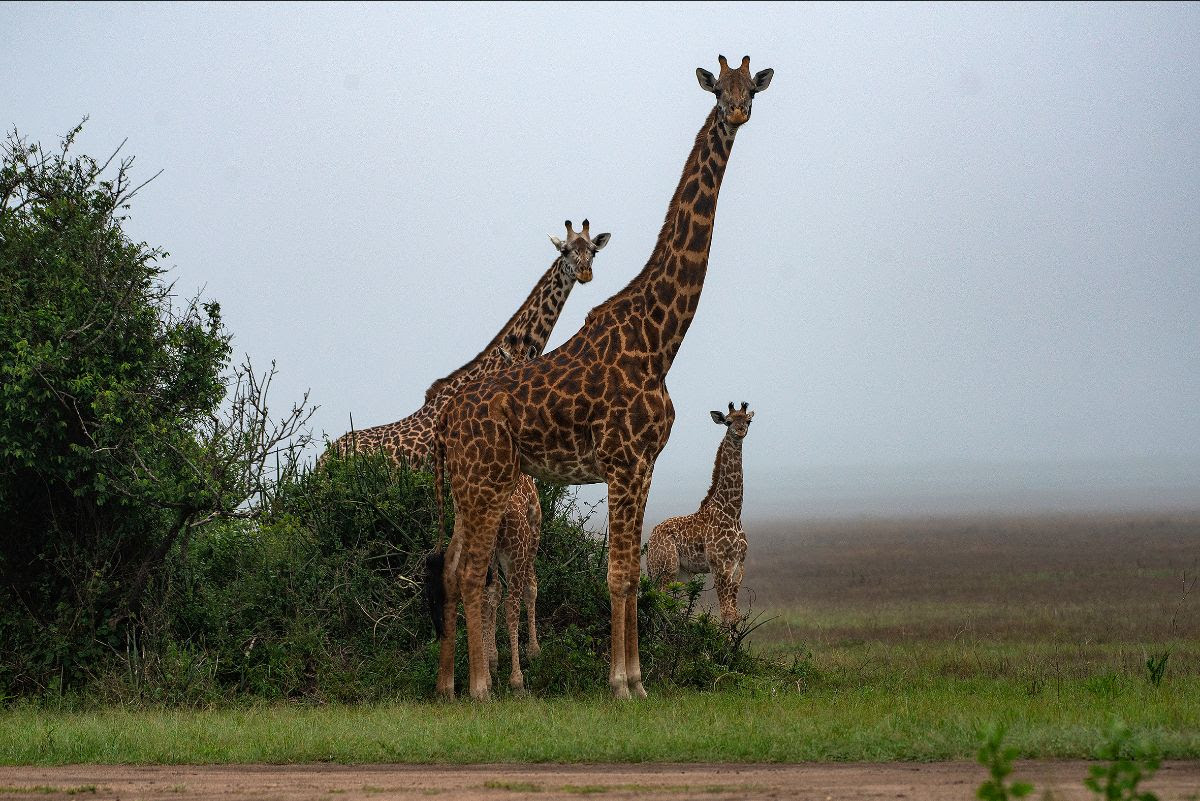Greetings and welcome to our third newsletter of 2023. The rainy season has returned, and as a result, Akagera is once again a lush and vibrant green. The onset of the rainy season also comes paired with an increase in births in the park and as usual, we expect migratory birds to follow the arrival of the rain as part of their annual migration pattern. We are pleased to report that tourism continues to thrive, with over USD 3.6 million in revenue obtained year-to-date, with three months left to go. This is a promising and encouraging sign for our goal of achieving self-sustainability.
|
|
|
Aerial census 2023. The biennial Aerial Census for 2023 was carried out in Akagera during the first week of August. The census involves counting all the large mammals and other important species in the park, which helps the management monitor the population trends. The final report is still being written however a total of 11,338 animals were counted in the terrestrial and wetland fringe zones, including 142 elephants; 1153 zebra; 782 waterbuck and 1820 hippos to name a few. In addition, we counted three leopards and six hyenas. Based on the ongoing surveys, we estimate that there are between 60-80 leopards and 120-150 hyenas in Akagera. The animal population in Akagera has increased by 127% since the first aerial census conducted in 2010 which counted less than 5000 mammals.
|
|
 |
| 142 elephants were counted during the 2023 aerial census. Photo by Keyvan Amigh. |
|
Rhino calf born from zoo rhinos. Last July, we shared exciting news on our social media platforms about the birth of an eastern black rhino calf. This calf was born to one of the rhinos that were relocated from European zoos in June 2019. The relocation was a collaborative effort between the European Association of Zoos and Aquaria (EAZA), the Government of Rwanda, and African Parks. This birth is an important milestone for us as it marks the first successful birth of a calf from the zoo rhinos since they were moved to the park. We are happy to report that the calf is doing exceptionally well and is enjoying his new environment.
|
|
 |
| Baby rhino born from the zoo rhino. Photo credit: Drew bantlin |
|
Walking Safaris. We are delighted to announce that the three-day walking safari, which was organized in September, was an outstanding success. “The walking safari was an unforgettable and fantastic lifetime experience! With Wayne Te Brake we had a nice, very knowledgeable and professional guide supported by Isaac and the two rangers – Nathan & Julian from ANP. We very much enjoyed the daily walks which were well selected showing the variety of the Akagera National Park. We saw almost all the animals the park is hosting and learned a lot from Wayne about individual animal behaviour and the entire Ecosystem”. Said one of the participants.
We would like to extend our sincere appreciation to all the participants who joined us for the Walking Safari this year. It was a pleasure to have you with us and witness your enthusiasm and love for nature. Please stay tuned for updates and announcements regarding next year’s dates, as we will be sharing them with you as soon as they are confirmed.
|
|
Marine training. Last September, 17 Akagera rangers from the marine unit underwent a two-month marine training in Rubavu district. The training program covered various aspects, including swimming, water survival and rescue techniques, weapon training, boat engine maintenance, first aid, seamanship, boat handling, and physical fitness. This comprehensive training aimed to equip the rangers with essential skills and knowledge required for their duties related to marine operations. We would like to express our appreciation to the Rwandan Police Marine Unit for their support in making this training a success.
|
|
| A group of 17 Akagera rangers received training in the Rubavu district. |
|
|
Tourism revenue sharing. The local communities in the three districts surrounding Akagera National Park are set to receive a significant boost from the Tourism Revenue-Sharing Scheme in the 2023/2024 season, with over USD 800,000 being distributed to support their life-changing projects. A committee comprising the park management, local administration, and the Rwanda Development Board will convene to select viable projects from more than 65 community project proposals so far. Since 2025, Akagera National Park contributed $3.5 million in supporting over 200 projects around Akagera including infrastructure, beekeeping, fishery, and agriculture among others. This is exciting news, and we are delighted to see the tangible benefits that the local communities around Rwanda’s national parks are receiving from conservation
|
|
 |
| The handover of symbolic cheques of the Revenue sharing scheme. |
|
K9 training. Together with Darren Priddle, a Dogs 4 Wildlife K9 trainer, we hosted a two-week training for Akagera’s K9 unit. The training prioritized detection training, tracking; relationship and play, welfare and Husbandry. This training has helped shape and implement some important foundations that will allow the k9 unit to operate at the next level. Special thanks to Laurel Werner from the Kilimanjaro Technology Foundation for sponsoring Dogs4Wildlife to make this project possible.
|
|
 |
| K9 unit in training. |
|
|
Wildlife Ranger Challenge. On 16 September 2023, more than 100 rangers and staff members from all four national parks in Rwanda participated in the annual Wildlife Ranger Challenge, a 21km half marathon held in Akagera National Park. The primary goal of the event is to promote camaraderie among rangers from Rwanda’s national parks and raise awareness for supporting the work of wildlife rangers across Africa’s protected areas. Fabrice Uwizeye, a rhino tracker from Akagera, was the first to finish the race in just 1 hour and 13 minutes and Leonira Niyomuhoza finished first among women in 2 hours and 19 minutes.
|
|
 |
| Rangers on the run during the 2023 Wildlife Ranger Challenge. |
|
|
Interesting sightings of the last quarter. During the most recent wetland survey, the conservation and research team observed 48 Sitatunga antelopes. In addition, the team recorded a sighting of an African grass owl deep in the wetland complex. This sighting is believed to be the first of its kind within the current Akagera boundaries. Although most observations of the species come from northern and western Rwanda (including Nyungwe National Park), there are a few ancient records from the eastern savannas, outside of the current park limits.
|
|
| Sitatunga and African grass owl. Photo credit: Drew Bantlin |
|
|
Giraffe survey. According to the recent survey conducted by the Giraffe Conservation Foundation, the population of Masai giraffes in Akagera National Park has increased to over 110, as compared to the 100 counted in March 2022. The park has been home to giraffes since 1986 when six Masai giraffes were brought over from Kenya.
|
|
 |
| 110 giraffes were counted in the recent survey. Photo credit: Mihir Max Bhatt |
|
|
Citizen Science Survey. In collaboration with park staff, rangers, and friends of the park, Akagera recently completed its annual transect walk to survey the park and conduct a count of large mammals and other key species. Throughout this endeavour, the teams were able to observe and count a total of 1,566 animals. Among the notable sightings were ten white rhinos, four lions, 16 elephants, 817 buffalos and one leopard. Additionally, the teams recorded 20 roan antelopes and 31 elands. Two vultures and one python were also spotted during the survey. Once again, the transect walk proved to be a fun event for all participants while providing an excellent opportunity to explore and appreciate the park’s diverse wildlife.
|
|
 |
| The citizen science survey was conducted in October. Photo by Drew Bantlin |
|
|
Tree planting season. The nursery at Akagera Community Centre has set a goal to cultivate more than 40,000 seedlings this year, which will be planted in the surrounding communities. The majority of these seedlings are made up of over ten indigenous species, with the remainder being fruit and agroforestry. These trees will be planted in public areas and schools where locals and students can assist in planting and caring for them while learning about the importance of nature and the environment. Our community liaison team will be responsible for monitoring the trees to achieve the highest possible survival rate.
|
|
 |
| 40000 trees will be planted in the local community |
|
|



